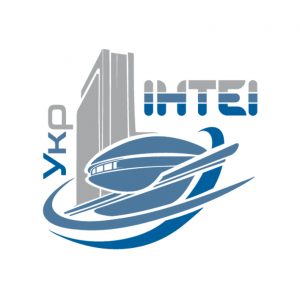Ryzhova O. P. — PhD in Engineering, Associate Professor, vice-rector for scientific and pedagogical work of
Ukrainian State University of Chemical Technology, 8, Haharin Ave., Dnipro, Ukraine, 49005; +38(056) 46-21-21; olgaryzhova2017@gmail.com
Holeus V. I. — Doctor of Science in Engineering, professor, first vice-rector of Ukrainian State University of Chemical Technology, 8, Haharin Ave., Dnipro, Ukraine, 49005; +38(056) 47-32-48; holvik22@gmail.com
Kyslychna R.I. — PhD in Engineering, Researcher of Ukrainian State University of Chemical Technology, 8, Haharin Ave., Dnipro, Ukraine, 49005; +38(056) 47-38-96; Kislichnaya.ri@gmail.com
Nagorna T. I. — PhD in Engineering, Associate Professor of Ukrainian State University of Chemical Technology, 8, Haharin Ave., Dnipro, Ukraine, 49005; +38(056) 47-38-96; nagornaya.nti@ gmail.com
Naumenko S. Yu. –PhD in Engineering, Associate Professor of Ukrainian State University of Chemical Technology, 8, Haharin Ave., Dnipro, Ukraine, 49005; +38(056) 47-38-96; naymenko.su@gmail.com
DISTINCTIONS OF PREPARATION BATCH FOR OBTAINING WHITE GLASS COATINGS
Abstract. Enameling technology in Ukraine pays much attention to the mechanical, physical, chemical, aesthetic and consumer properties of enameled products for various purposes, but issues of the order of charge are not given due attention. The process of preparation of batch for subsequent frit cooking is considered to be well known and standard. Such qualities of enameled products as expressive form, whiteness, enamel color, quality of decor, and pattern predetermine the competitiveness of products in the market of consumer goods. These indicators depend on monitoring the accuracy of compliance with each stage of production, including the quality of raw materials (constancy of chemical composition and purity of materials, the degree of their grinding, the sequence of introduction into the charge, the duration of mixing). The influence of the sequence of introduction of raw materials into the charge on the optical indicators of titanium glass coverings is studied. A rational technological procedure for the preparation of batch has been worked out, which consists of mixing in the first stage titanium dioxide and magnesium oxide, then sodium and potassium nitrate and sodium tripolyphosphate and only then sand and all other components. The grain composition of the materials corresponded to sieving through a 02 (912 holes/cm2) sieve. Glass-enamel coatings with a high reflectivity of a white surface (CDR=87.1…87.2%) and good gloss of the glass layer (84–85%) were obtained. The developed glass covers are designed for application to steel products for domestic and technical purposes.
Keywords: raw materials, order of composition of charge, glass enamel, anatase, optical characteristics, coefficient of mirror reflection (CMR), coefficient of diffuse reflection (CDR).
REFERENCES
1. Bilyi Ya.I., Kyslychna R.I., Ponomarchuk S.M., Naumenko S.Iu. (2005) Lehkoplavki bezftorysti malotytanovi
emalevi pokryttia [Meltingless, fluoric, lowtitan enamel coatings]. Voprosy himii i himicheskoj tehnologii [Questions of chemistry and chemical technology], 1, 59–62.
2. Bilyi Ya.I., Kyslychna R.I., Minakova N.O., Nahorna T.I., Naumenko S.Iu. (2011) Bezftorysti skloemalevy
pokryttia biloho koloru [Fluorescent glassenamel coatings of white color]. Voprosy himii i himicheskoj tehnologii [Questions of chemistry and chemical technology], 1, 156–158.
3. Bragina L.L., Zubehin A.P., Belyj Ya.I. at al. (2003) Tehnologiya emali i zashitnyh pokrytij [Technology of
enamel and protective coatings]. Har’kov (in Ukr.): NTU “HPI”; Novocherkassk: YuRGTU (NPI) Publ., 484.
4. Vargin V.V. (1958) Tehnologiya emali i emalirovanie metallov [Enamel technology and metal enameling].
Moscow (in Russ.): Gosstrojizdat Publ., 400.
5. Ryzhova O.P., Khokhlov M.A., Kyslychna R.Y. (2015) Rozrobka bilykh tytanovykh emalevykh pokryttiv zi znyzhenoiu temperaturoiu vypalu [Development of white titanium enamel coatings with reduced firing
temperature]. Tehnologicheskij audit i rezervy proizvodstva [Technological audit and production reserves], 4/4 (24), 25-30.
6. Pavlas J., Mashita I., Kovalchikova M., Gunyachik V. (2009) Syre dlya polucheniya emalej i ih proizvodstvo
[Raw materials for enamels and their production]. Informacionnyj vestnik obshestvennoj organizacii
“Ukrainskaya organizaciya emalirovshikov”. Sbornik informacionnyh nauchno-tehnicheskih i proizvodstvennyh publikacij [Informational Bulletin of a public organization; Ukrainian organization of enamellers; Collection of information scientific, technical and production publications]. Harkov (in Ukr.), 4, 82–91.
7. Pagliuca S. (2011) Porcelain (Vitreous) Enamels and Industrial Enamelling Processes. The Preparation, Application and Properties of Enamels, Third Edition, Mantova: Tipografia Commerciale, 900.
8. Petcold A., Peshmann G. (1990) Emal i emalirovanie [Enamel and enameling] a reference book. Ed. A. Petcolda. Moscow (in Russ.): Metallurgiya Publ., 574.
9. Liang Menglin, Xiao Hanning, Zhuang Liyuan (2012) Microstructure and Properties of an Enamel Containing Nano-sized Crystals of Titanium Dioxide, 22nd International Enamellers Congress — Cologne.

